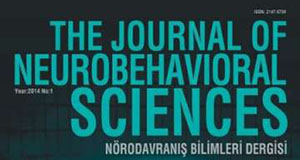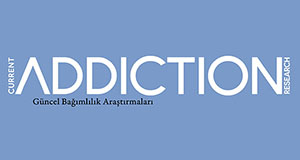
Bipolar disorder is a disease characterized by chronic and recurrent mood episodes. Depression and mania are mood episodes that are opposite to each other. Depressive and manic episodes with mixed features are phenomenologically rich and physiopathologically chaotic periods as they have both poles of the disease together. However, a mixed features of mood episode offers different possibilities to evaluate together and separate phenomenology and physiopathology of opposite poles of the disease. The core symptom of the disease, affective dysregulation and compensatory regulation effort, is available here.
The fMRI findings of the corticosubcortical coupling between the amygdala and the frontal cortex have been defined as the emotion regulation efficiency index (Banks et al., 2007). QEEG reflects neuronal activity directly with very high temporal resolution (Kesebir and Yosmaoğlu, 2018). Affective dysregulation can be manifested by an irregularity in slow and rapid wave formation on EEG. It has been suggested that the relationship between slow and rapid wave activity is a reflection of corticosubcortical interactions involving affective processes (Knyazev, 2007). Cognitive function and psychomotor activity are other components of this relationship. As a matter of fact, there is a valuable relationship between an attention and an efficacy of emotion regulation capacity (Rueda et al., 2005). The increase in beta power induced by slow wave activity is associated with increased cortical activity suggesting that regulation of negative affect is associated with attentional control.
An increased delta-beta coupling in the frontoparietal region serves a better executive function, an increased inhibitory control, a decision-making characterized by advantageous choices, and less interference (Schutter et al., 2006; Putman, 2011). These three functions were injured in bipolar patients. The important question at this point is whether the increase in cross frequency coupling (CFC) delta-beta is adaptive or not, and how independent and trait anxiety or dysthymia are. Previous publications have reported a reduced frontal delta-beta CFC in obsessive-compulsive anxiety, social phobia and trait anxiety (Putman et al., 2012; Poppelaars et al., 2018). In a study conducted with healthy individuals, Morillas-Romero et al. (2015) showed an association between stronger delta-beta CFC at parietal sites and higher self-reported attention control in performance based attentional network functioning. Delta-beta CFC was not only unrelated to orientation and alertness, but also that the expected reduction in theta/beta ratio did not accompany this change. According to their results, automatic cognitive processes seems to be less sensitive to state anxiety, providing better executive function in the absence of emotional content. This findings has directed the interest to the role of the affective component.
In the literature, there is no study investigating delta-beta CFC in any affective disorder. The aim of this study was to investigate whether differentiation of delta-beta CFC in bipolar depressive episode with mixed features and consecutive remission was observed.




